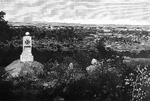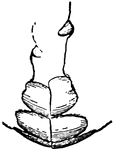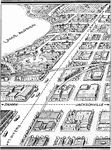
Hooker's Battle
"The war in Tennessee. Hooker's Battle above the clouds, and capture of the Confederate position on…

War in Louisiana
"The war in Louisiana. The army of General Banks crossing Vermilion Bayou, October 10th, 1863. Our artist…

Invasion of Pennsylvania
"The invasion of Pennsylvania- working on the fortifications near Harrisburg, Pa., June 16th, 1863.…

War in Georgia
"The war in Georgia- Stevenson, Ala., depot for General Rosecrans's Army. The campaign of General Rosecrans…
War in Texas
"The War in Texas. Brownsville, occupied by the army under Major General N. P. Banks, in 1863. The sudden…
Recrossing the Rappahannock
"The war in Virginia. General Meade recrossing the Rappahannock, October, 1863, before Lee's advance.…

War in Virginia
"The war in Virginia. General Butler's lines south of the James, Va., with troops in position near the…

Eighteenth Corps
"The war in Virginia. A regiment of the Eighteenth Corps carrying a portion of Beauregard's line in…

Capture of Lost Mountain
"The war in Georgia. Capture of Lost Mountain by General Hooker, June 16th, 1864. On June 14th General…

Sherman's Campaign
"Sherman's Campaign in Georgia- the attack of the Fourteenth, Sixteenth and Twentieth Army Corps on…

Sheridan's Great Battle
"The war in Virginia- Sheridan's Great Battle with J. E. B. Stuart at Yellow Tavern, May 11th, 1864-…

Battle of Ream's Station
"The Siege of Petersburg. Battle of Ream's Station- the attempt of the enemy to regain the Weldon Railroad…

Savannah, Georgia, Looking East
"View of Savannah, Ga., looking east, toward Fort Jackson. Savannah, the entry port of Georgia, is built…

Belle Isle
"View of Richmond, Va., from the prison camp at Belle Isle, James River. Belle Island is situated in…

Bummers
"Sherman's 'Bummers' foraging in South Carolina. Our artist sent us with this sketch of 'Bummers Foraging'…
Sheridan's Campaign
"Sheridan's campaign in the Shenandoah Valley- the Federal forces falling back through Charlestown,…
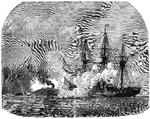
Mobile Harbor
"Farragut's naval victory in Mobile Harbor. The Hartford engaging the Confederate ram Tennessee.…

Buzzard's Roost
"Sherman's Campaign. The capture of Buzzard's Roost at Hovey Gap, Ga., May 8th, 1864. Among the strongholds…
!["Assault of the Second Louisiana [African American] Regiment on the Confederate works at Fort Hudson, May 27th, 1863. The Battle of Fort Hudson was a severe and well-fought action. The Federal troops displayed their usual bravery, and were well handled by General Banks, driving the enemy to his second line of works. Of the [African American] regiments General Banks, in his official report, says: 'They answered every expectation. Their conduct was heroic. No troops could be more determined or more daring. They made during the day three charges upon the batteries of the enemy, suffering very heavy losses, and holding their position at nightfall with the other troops on the right of our line. The highest commendation is bestowed upon them by all officers in command on the right. Whatever doubt may have existed heretofore as to the efficiency of organizations of this character, the history of this day proves conclusively to those who were in a condition to observe the conduct of these regiments that the Government will find in this class of troops effective supporters and defenders. The severe test to which they were subjected, and the determined manner with which they encountered the enemy leave upon my mind no doubt of their ultimate success. They require only good officers, commands of limited numbers, and careful discipline to make them excellent soldiers.'"— Frank Leslie, 1896](https://etc.usf.edu/clipart/11800/11805/ft-hudson_11805_mth.gif)
Fort Hudson
"Assault of the Second Louisiana [African American] Regiment on the Confederate works at Fort Hudson,…
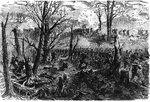
War in Tennessee
"The war in Tennessee. Capture of Mission Ridge, near Rossville, by General Thomas, November 25th, 1863.…
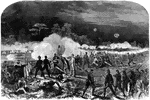
Grant's Campaign
"Grant's Campaign in Virginia. Repulse of Lee's night attack on Smith's Brigade, Hancock's Corps, Friday,…
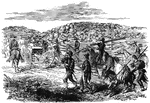
Southern Caricature
"A southern caricature- 'Generals Wheeler and Wharton falling slowly back, contesting every foot of…

Strapped to ground
A view of Gulliver strapped to te ground with ligatures across his body. With curiosity the inhabitants…

Jackson Hill
"Sheridan's campaign in the valley of the Shenandoah- view of the front from the Federal lines on Jackson…

Battle of Gettysburg
"The Battle of Gettysburg, Friday morning, July 3rd, 1863. In our illustration may be studied the struggle…

General Joseph E. Johnston
"General Johnston, born in Cherry Grove, near Farmville, Va., February 3rd, 1807; died at Washington,…

Radish
View of a radish, illustrating the root-hairs, which absorb most of the water the plant needs.
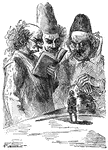
Scholars with Gulliver
After arriving at the King of Brobdingnag's court, Gulliver is analyzed by three of the King's scholars.

Gulliver and the King
Gulliver sitting in a chair, having a conversation with the King of Brobdingnag.
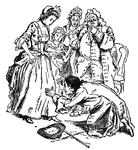
Gulliver Stoops to Wife
Returning to England, Gulliver's mind set was still back at lilliput. He stoops down at his wife's knees,…

Side View of Farmhouse
Scattered planting of trees pruned in artificial shapes in front of a farmhouse.
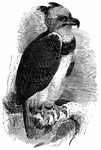
Harpy Eagle
Genus Harpyia, it is one of the largest, most fierce, and powerful eagles. It has a crest of…

Lammergeyer
The lammergeyer (Swiss for "lamb-killer") is a member of the vulture family, but has a notably feathered…
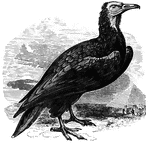
Egyptian Vulture
N. percnopterus, common to Africa, sometimes found in Southern Europe and in Asia. Males and…
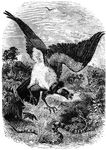
King Vulture
Genus sarcoramphus, a large vulture found in the tropical regions of the Americas, sometimes…
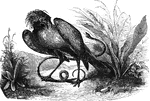
Secretary Vulture
G. serpentarius, known as the serpent vulture because it feeds on snakes. It has a distinctive…
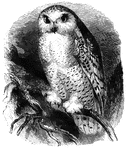
White Owl
The white owl (also known as the snowy or ermine owl), found in the colder latitudes of the world. Its…
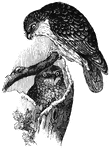
Athene conneviens
Athene conneviens, which derive their name from the Greek goddess of wisdom, supposedly for their meditative…
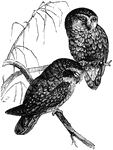
Athene Maculta
Athene maculta, which derive their name from the Greek goddess of wisdom, supposedly for their meditative…

Gerbil
"They are somewhat rat-like in appearance, but are noted for the elegance of their forms, the length…

Sminthus Loriger
"Two and a half inches long, with a tail of nearly equal length. It is of a grayish-brown, with a black…

Barbary Mouse
"It is of a grayish-fawn color, with ten longitudinal brown strips along the back. Between the size…
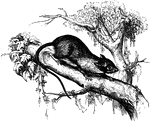
Free Mouse
Dendromys Typicus. "Size of the common mice, and are of a pearly-gray color, and have a black band running…
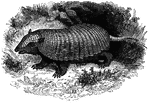
Giant Tatou
"In this carapace covers the body above and low down on the sides, but leaves the belly unprotected;…

Second Battle of Bull Run
"Second battle of Bull Run, fought Saturday, August 30th, 1862, between the Federal forces commanded…
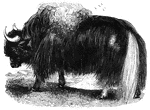
Yak
"The color of this animal in the wild and take, is black; the back and tail often white; the hair is…

Battle of the Wilderness
"The battle of the Wilderness, between General Grant and General Lee, May 5th and 6th, 1864. Our sketch…

Prison Pen
"The great Prison Pen at Andersonville, Ga. The stockade was orginally eleven acres, which was increased…
